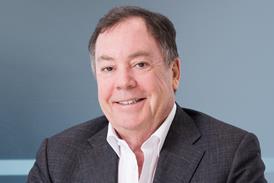Thirteen would-be guides sat the exam, but just five managed to score more than the 60% pass mark we'd stipulated. Five people was just about the minimum number of guides we had in mind for the first cohort. Our plan is to repeat the exam, along with a revision session, in two months' time. By this time – we hope – other potential guides will emerge from the woodwork, tempted by the nice uniforms we're giving to the five passers, plus the extra incomes they'll earn from working as guides.
Three weeks ago I had the unexpected treat of meeting Otavalo's mayor. We wanted to get official recognition for the exam-passers to work as guides – hoping for a stamp from the local government to put on identity cards. A well-connected man from Otavalo, Willy, works with Mojandita's environmental association from time to time. We ran into him by chance in the street one day, and reminded him we needed to fix a meeting with the local authorities to arrange recognition.
Willy said we should go and do it straight away. He walked us into the town hall, straight up to the door of the mayor's office, past an armed guard and two secretary-cum-gatekeepers, plus a long queue of other people, all waiting to speak to the mayor.
The mayor shortly poked his rotund face around the door, and greeted our man Willy as a friend. Willy was better-connected than I'd realised.
We entered the mayor's opulent office: wooden panelling on two walls, flags aplenty, and magnificent views over the town square. The office was large enough to accommodate 20 people sitting down, or many more standing.
In complete contrast to the surroundings, though, the mayor was dressed informally (even a little scruffy), which made us less concerned about our own ragged work-clothes. The most important man in Otavalo was wearing jeans with a hole in one knee, white trainers, and a bobbly woollen jumper. Cool! This was Otavalo's first indigenous mayor and he retained the black hat identifier of indigenous people here. (It's not at all unusual to wear a hat indoors in Ecuador – I often do so myself.) He welcomed us warmly, and heard what we had to say. His form of speaking and manner betrayed his education – probably university-level – and showed he was part of the tiny minority of educated indigenous people here.
As we told our story he did little more than nod and say 'hmm' in appropriate places. He gave the impression of performing this role all the time. He agreed to our request, though, without hesitation, and asked in return if we'd help his environmental office get started. Of course, we jumped at the chance, not really sure it would ever materialise.
Colombia shares a 400 mile strip along Ecuador's northern border. It is the world's number one producer of cocaine, with the main drug-growing and processing centre in Putumayo, just the other side of the border.
Putumayo is the biggest single source of coca in all South America, and as such has made itself the prime target of US anti-drugs policy. This policy is now spearheaded by 'Plan Colombia' – a war against drug production motivated as much by America's failure to deal with its drug problem on home turf as by any concern about Colombian well-being.
A report in the New York Times claimed that Ecuador was the most vulnerable of all Colombia's neighbours: the least prepared to fight against the drug-growers setting up shop. Ecuadorian newspapers say the army has no vehicles or fuel to engage with the guerrillas, and the police around the borders have guns but no bullets.
Ecuador has increased military patrols along the northern border, helped by $8 million from the US to protect its land. However, the government says this is woefully inadequate. It wants to set up social projects as an alternative to drugs and crime, which would cost up to $60 million a year.
Ecuador is also sure to suffer from the plan to spray deadly herbicides in Putumayo. Fusarium oxisporum is classified as one of the most lethal funguses, which can mutate not only coca, but any plant species. It is reckoned to affect plants tens of kilometres away from the spray-zone, and can survive in a latent state for up to 10 years in the soil. It will inevitably end up in streams and rivers now used for drinking water – affecting Colombians and Ecuadorians alike.
Source
Building Sustainable Design
Postscript
Dr Jason Palmer, Mojandita, Ecuador



















